Before the importer Profesionnal Product Line (PPL) offered us its Ruark Audio MR1 speakers to do this benchmark, we had never heard anyone speak about this brand imported by PPL.
However, this English brand has already been around for thirty years, since it was founded in 1985 by Brian O?Rourke and his son Alan, who today manages the business previously directed by his father.
Its activity has nevertheless suffered from the collapse of the Hi-Fi market since 2004, when Ruark Audio refocused its activity on the high quality DAB (digital broadcasting) radio sector, whereas before it had focused on the design and manufacturing of High Fidelity headphones.
The band went back to basics in 2013, when it presented its MR1 speaker, a compact amplified speaker adapted to digital sources and equipped with a Bluetooth aptX receptor. This speaker will be the object of this benchmark.
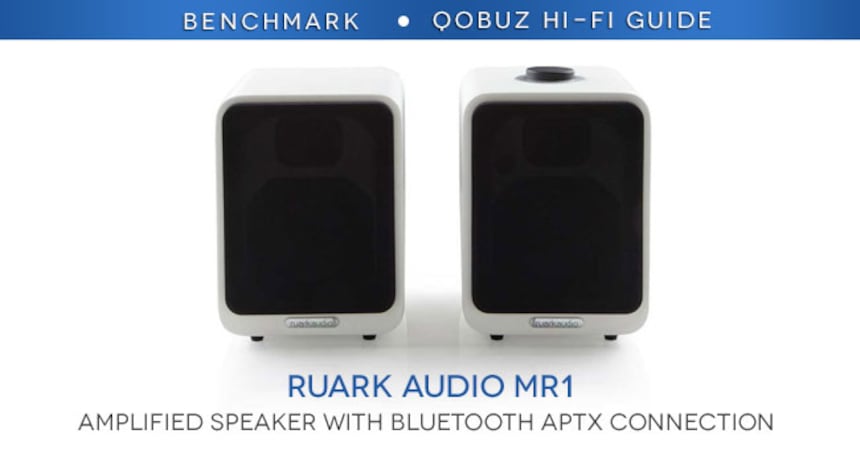
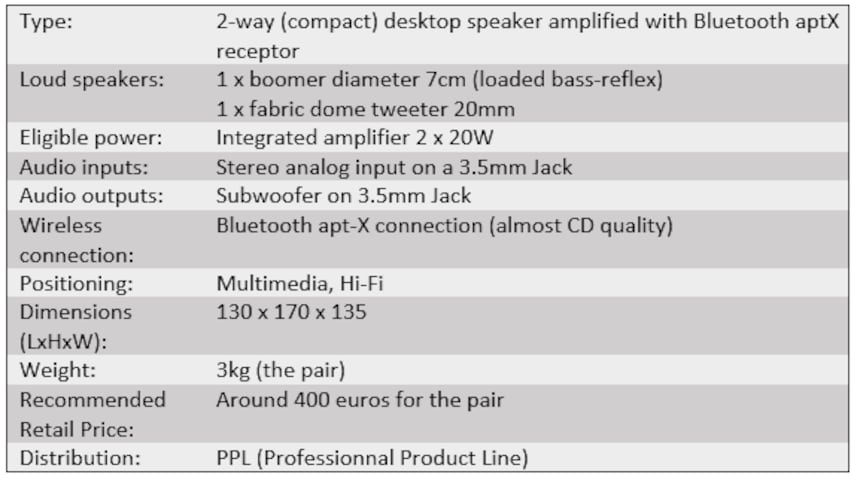
Appearance
The Ruark Audio MR1 speakers have a classic appearance, with rounded horizontal edges that bring a touch of sweetness to the frame offered in three colours: rich walnut, (which is a little sombre for our taste), soft black and soft white. The device is very well connected and can work harmoniously with a computer system.
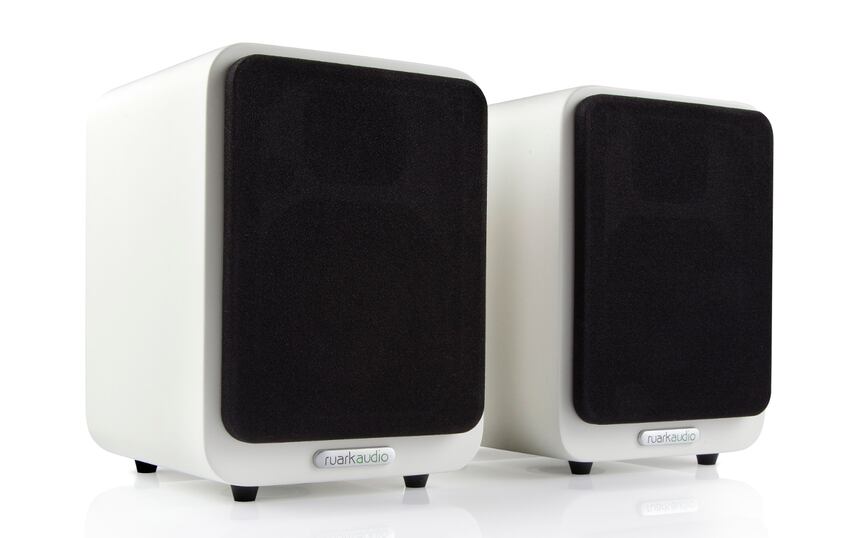
At the top of the right speaker there is a dial that enables you to control the volume (also remote controlled) and a two coloured LED light which indicate the selected source and state of the Bluetooth aptX connection, when it is chosen as a source.

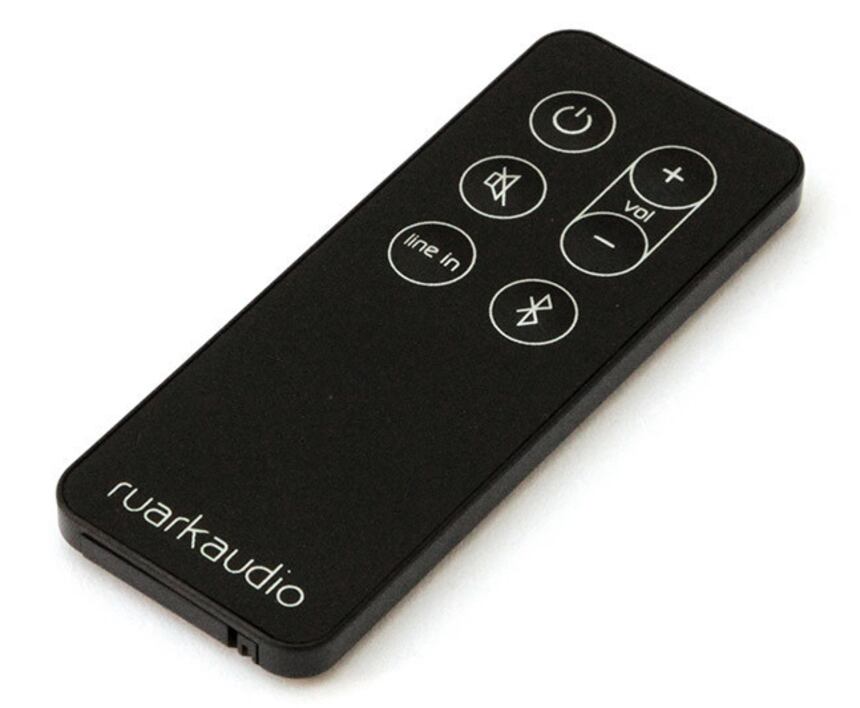
Connectivity
The connectors, which are found on the back face of the right speaker, include: the connector for the power supply, the audio output for the left hand speaker, an output for the subwoofer on a 3.5mm Jack socket, and an input on a Jack of 3.5mm for an analogical source, such as a music player, whose sensitivity you can also adjust according to the output level of the connected device.
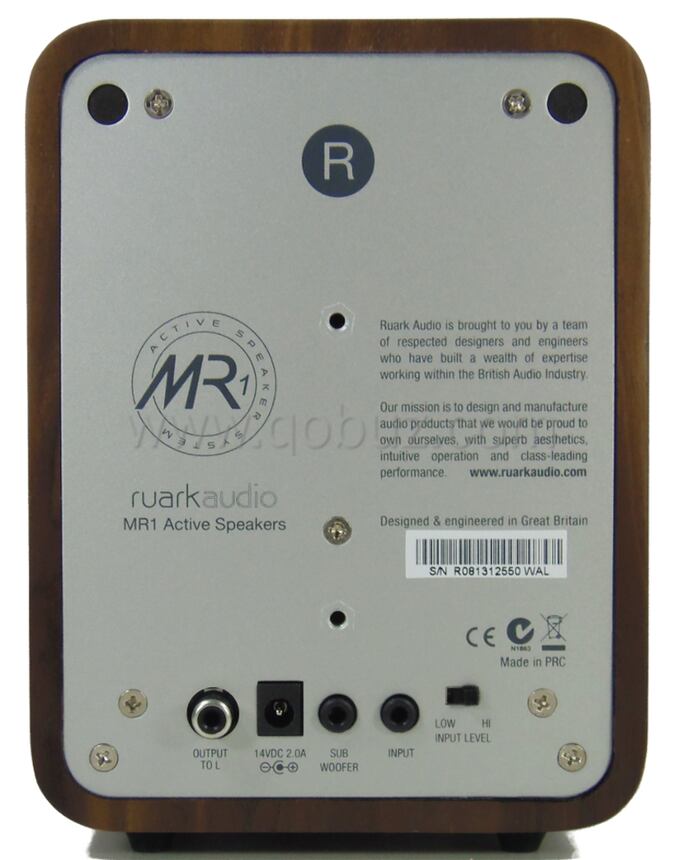
The MR1 speaker, which is fed by the power feed and delivers a unique voltage, can be equipped with a battery ?BackPack? block, which can be used everywhere and on the move.
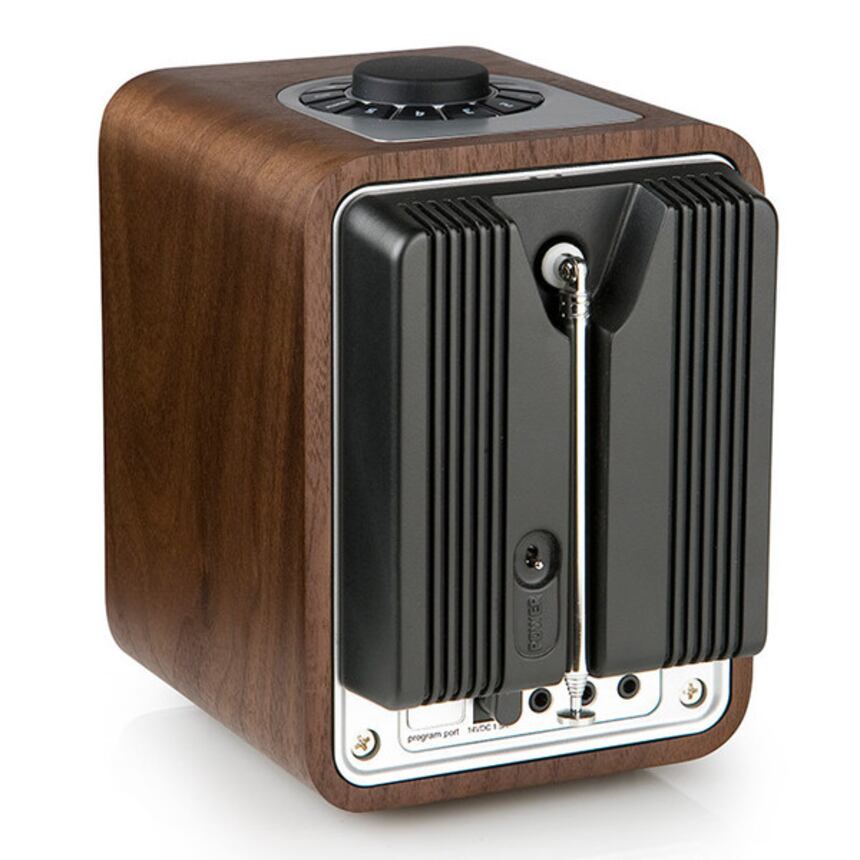
Production
The MR?s case is mid-range with a thickness of 13mm. The loud speakers are mounted in alignment with ridges with a counter bore.
The little boomer of 75mm in diameter is equipped with a membrane that seems to be made of polypropylene, and is furnished with a central rib that boosts the dispersion of the highest frequencies that it is produces.
Its resin injected frame contains a neodymium battery. Although it is no more than 3cm in diameter, it produces a suitably strong magnetic field with a good sound reproduction of the bass. The noise of the boomer is achieved by a vent that opens into the lower face of the speaker, a layout which reinforces the rendering of the bass.
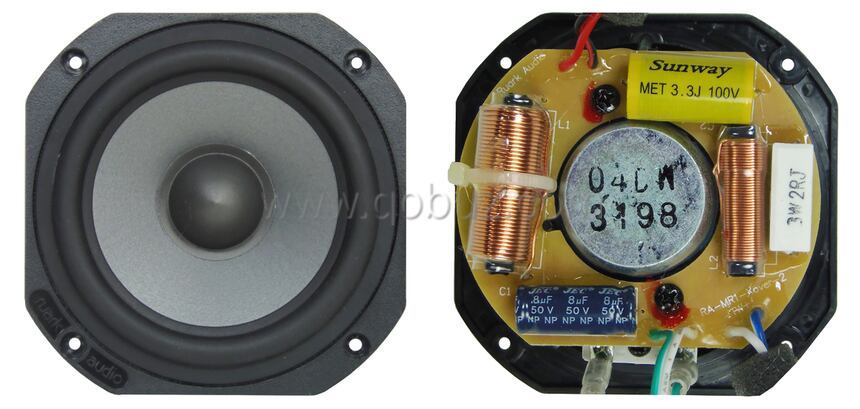
The filter, which uses high quality elements of a large dimension, is solidly fixed by two screws on the frame of the boomer.
The fabric dome tweeter of 20mm in diameter is equipped with a neodymium battery, and its frame contains a lodge fuse that gently produces its sound restitution.
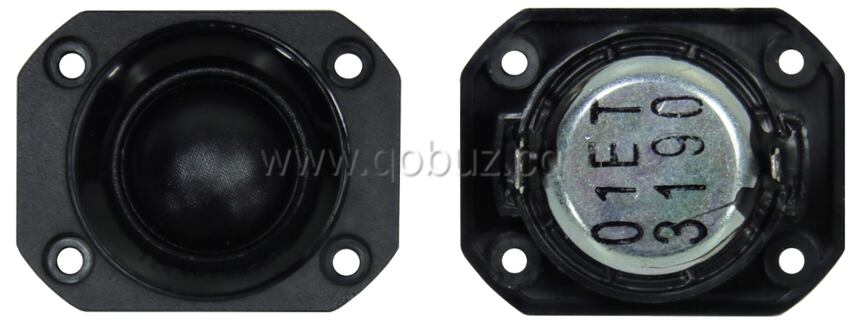
The loud speakers are designed by the brand Ruark Audio itself, which is inscribed into the boomer?s frame, and on the lode fuse for the tweeter, which you can see on the photo below.
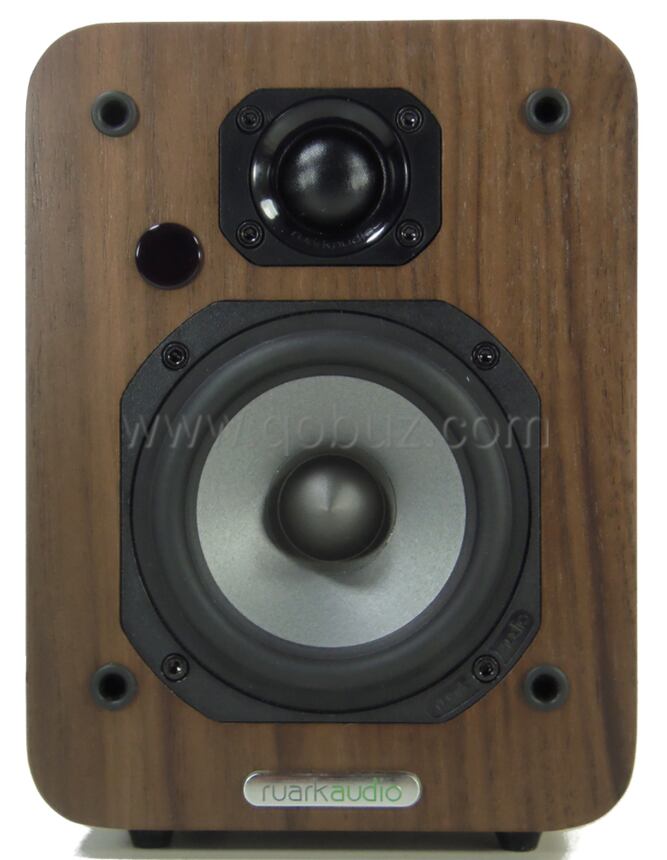
The loud speakers are designed by the brand Ruark Audio itself, which is inscribed into the boomer?s frame, and on the lode fuse for the tweeter, which you can see on the photo below.
This electronics are found on the steel back face of a thickness of 2mm, which uses both a technical plate and a heat sink for the integrated amplifier.
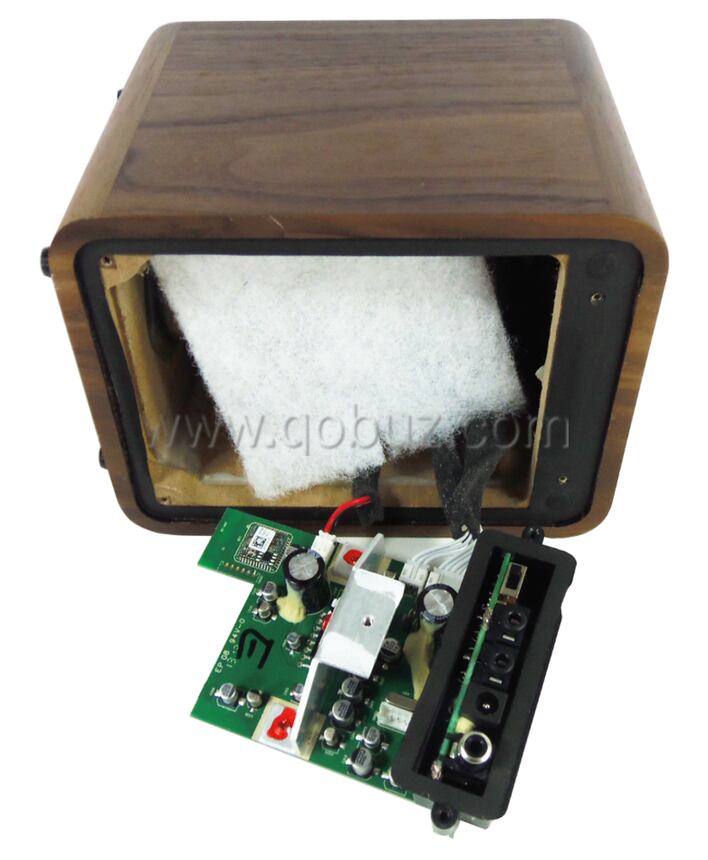
This is a STMicroelectronics TDA7266 model that works on a single voltage (which is battery operated) in a bridged (or symmetric) mode, delivering a power of 20W on 8 ? with a power supply voltage of 18V.
It is mounted on a bracket fixed onto a technical plate. This enables the devices to transfer the heat that, which disperses to the exterior of the speaker.
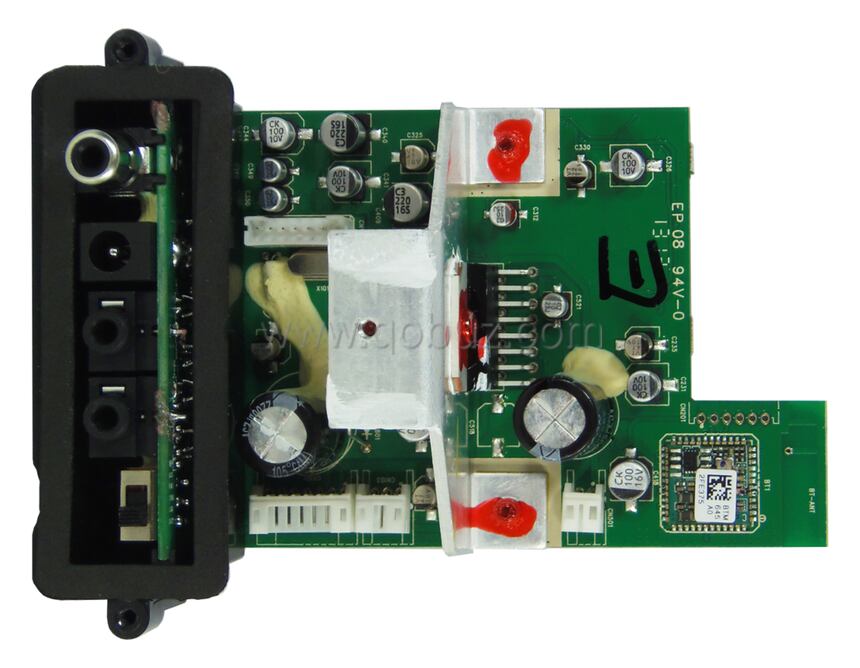
Two 2200?F/25V condensers ensure the filtering of the power supply voltage, which is plentiful.
The Bluetooth aptX reception module is placed in an open area of the printed circuit board, in order not to disturb the reception. This is a Rayson BTM-645 model, equipped with a CSR8645 CSR chip (Cambridge Silicon Radio), which integrates its own digital analog convertor.
On the other side of the circuit there is a Texas Instruments TL072 active filter built around the low noise amplifier, which straightens the signals coming from the DAC from the Bluetooth receptor.
Then comes the volume control circuit, a Princeton Technology PT2314 model. This is also used to switch between signals coming from the Bluetooth card and those coming from the wired analog input, as it contains four analog inputs.
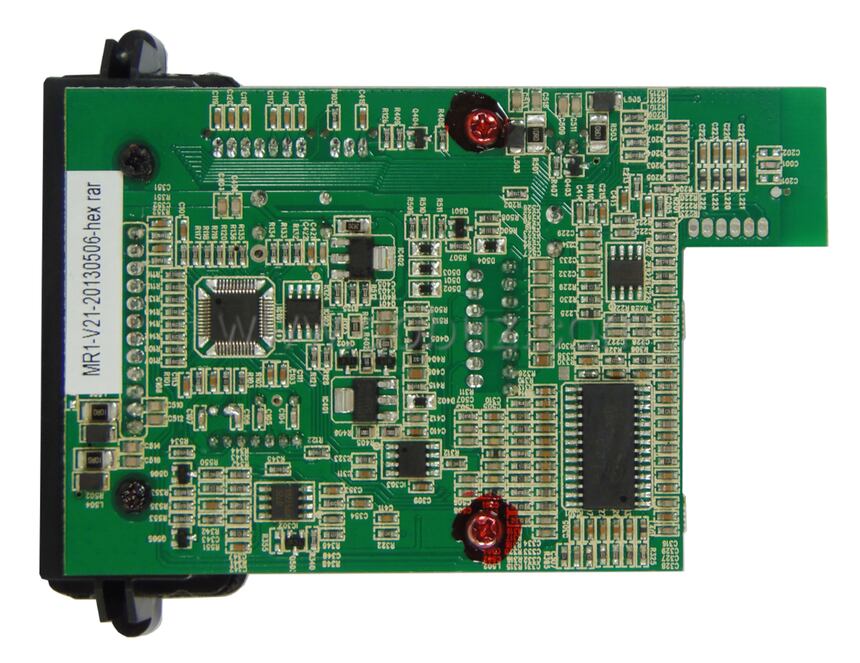
The rest of the card is taken up, amongst other things, by two LD1117 integrated regulators and a Renasas µPD78F0513A micro controller that manages the electronics.
Listening
Although the Ruark Audio MR1 speakers aren?t big, the kettle drum introduction to the first movement of Beethoven?s Concerto for Violin in the very beautiful interpretation by John Elliot Gardiner at the head of the Orchestra Révolutionnaire et Romantique accompanying Viktoria Mullova on the violin, manages to make a strong impression, whilst the whole reproduction proves to be very impressive.
You have to slightly tease the volume to liberate the speakers? sound. However they do not shy away from producing a large sound and creating a beautiful sound scape. This is the case when playing the Laghetto from the same Concerto for Violin, where the orchestra and the soloist expand with a surprising ease and beautiful richness, enabling you enjoy a fantastic sound balance where the highest notes of the violin are not at all tense.
We were also delighted when listening to extracts form the album Vespri per l?Assunzione di Maria Vergine by Vivaldi, by the well-loved Rinaldo Alessandrini directing the Concerto Italiano. The little MR1 speakers worked incredibly well, creating an honest and lively sound restitution of the orchestra and choirs, all the while respecting the timbres of the early instruments. This is all with a fantastic fullness which totally immerses the listener in the music.
What I did for Love from the album Listen by David Guetta is also pleasantly surprising. Although you should use more appropriate speakers when listening to the track as background music for a party, when listened to in proximity, whether the speakers are in an office or off a computer screen, as we did, the MR1 creates a very pleasant sound restitution which has body. It?s bass, although not awe-inspiring, was still present and supportive.
To conclude, this Ruark Audio MR1 office speaker produces suitably strong sound results which are very surprising when compared to its size. It doesn?t hold back from truly belting out the sound when asked! All in all, a good compact speaker, which you can also take on a picnic thanks to its optional battery pack.
If you are a manufacturer, importer, distributor or actor in the domain of sound reproduction and you wish to contact us, please do so using the following address: newstech@qobuz.com
If you are passionate about our Hi-Fi Guide and you wish to contact us, please do so using the following address: rubriquehifi@qobuz.com

